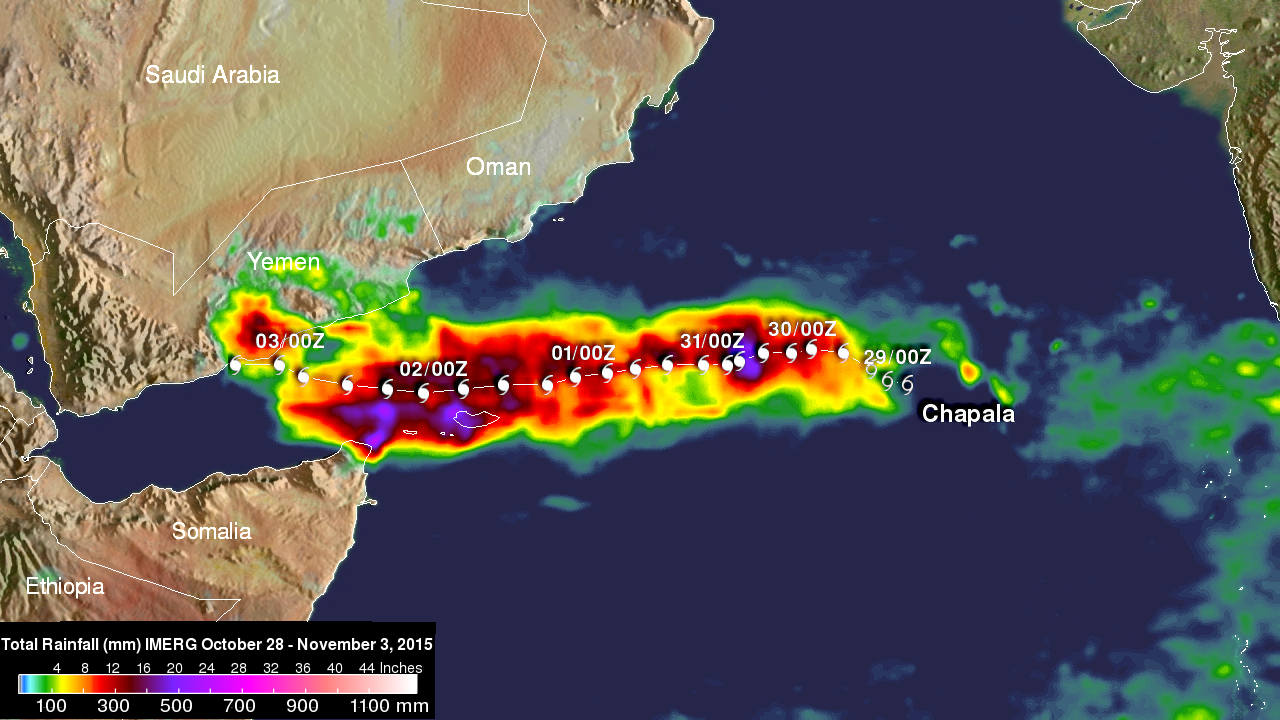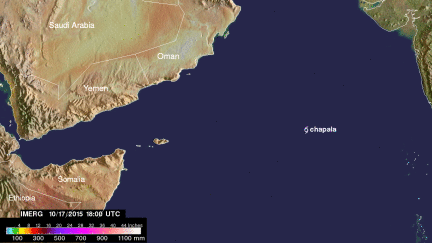Cyclone Chapala Brings Heavy Rains, Flooding to Yemen
Cyclone Chapala, which formed into a rare but powerful Category 4 cyclone in the Arabian Sea with winds at one time estimated at 155 mph by the Joint Typhoon Warning Center (JTWC) back on the 30th of October, made its initial landfall along the south coast of Yemen this morning west of the port city of Mukulla at around 09:00 UTC as a Category 1 cyclone with maximum sustained winds estimated at 75 mph by JTWC, making it the first Category 1 cyclone on record to strike Yemen. The last cyclone to strike the Arabian peninsula was Cyclone Phet, which hit eastern Oman back in 2010. In addition to the strong gusty winds, Chapala is expected to bring heavy rains and flooding to a country that is predominantly dry desert. Although on average the western highlands receive between 10 and 15 inches of rain per year, much of eastern Yemen receives less and 5 inches per year with coastal areas often getting less than 2 inches per year.
The Integrated Multi-satellitE Retrievals for GPM or IMERG is used to make estimates of precipitation from a combination of passive microwave sensors, including the GMI microwave sensor on board the GPM satellite, and geostationary IR (infrared) data. This image shows IMERG rainfall estimates for the period 18:00 UTC 28 October to 08:30 UTC 3 November 2015 for Yemen, the Gulf of Aden and the surrounding region in association with Cyclone Chapala. IMERG shows rainfall amounts on the order of 5 to 15 inches (shown in yellow and dark red, respectively) over south central Yemen and along the coast to the right of where Chapala made landfall as indicated by the storm track (shown in white) while significant areas of eastern Yemen appear to have received at least 3 inches of rain (shown in green). The highest total over Yemen was 398 mm (~16 inches). Most of these totals are the equivalent of a year's worth or precipitation or more. So far at least 3 persons are reported to have died and 200 injured as a result of the storm on the island of Socotra located about 150 miles east of the Horn of Africa. IMERG rainfall totals for Socotra are between 12 (dark red) and 20 (shown in purple) inches of rain.



